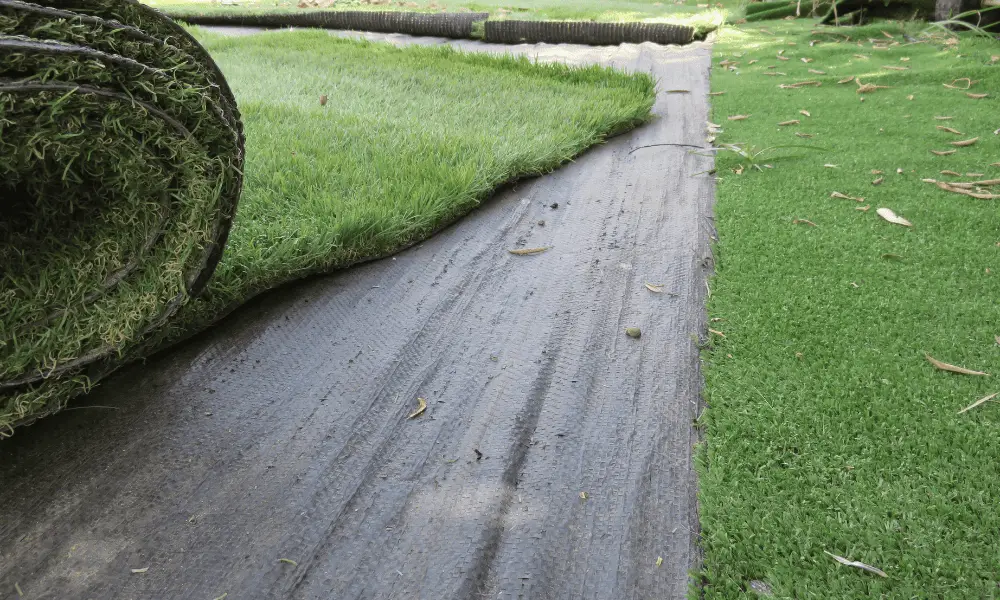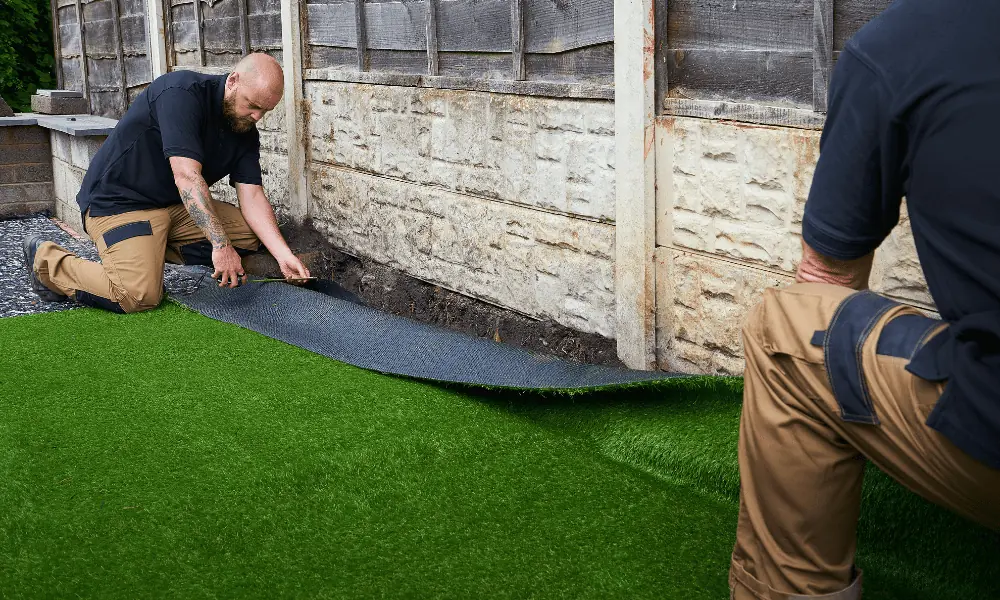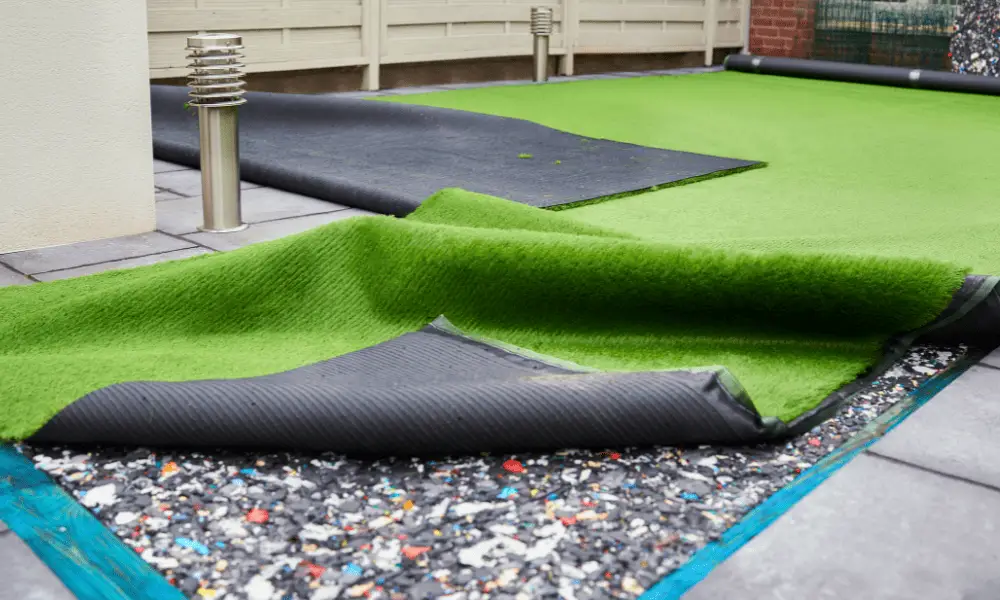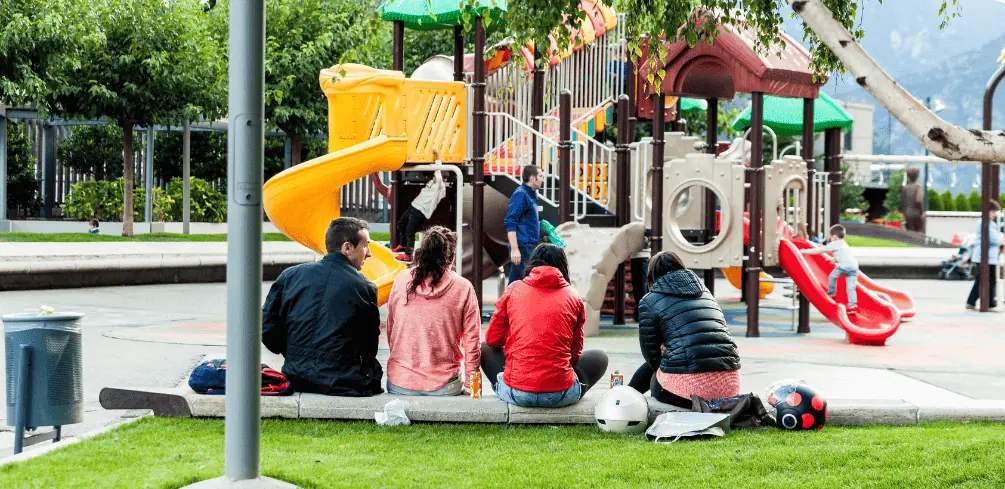You’ve made the decision to transform your outdoor space with artificial grass, creating a beautiful and low-maintenance oasis that will be the envy of your neighbors.
But before you break out the champagne and start celebrating, there’s one crucial aspect you need to consider – artificial grass edging.
The right edging not only ensures a professional finish but also keeps your synthetic turf in place for years to come while maintaining its pristine appearance.
As you embark on this journey towards a picture-perfect lawn, it’s important to familiarize yourself with the various types of synthetic turf edging available, along with their respective pros and cons.
Whether you’re tackling this project as a DIY enthusiast or enlisting the help of professionals, understanding the different materials and installation techniques is key to achieving an aesthetic that matches your vision.
Importance of Proper Edging

You might not realize it, but proper edging is crucial for your artificial grass installation – and here’s why. Edging maintenance plays a significant role in the overall lifespan and durability of your artificial lawn.
It ensures that the turf remains securely in place, preventing any movement or shifting that can lead to uneven surfaces, wrinkling, or even damage over time.
Additionally, having a well-defined edge around your lawn provides an aesthetic appeal that enhances the look of your outdoor space. When it comes to selecting the right materials for edging, you’ll want to choose something that complements both the appearance and function of your artificial grass.
Popular options include brick, stone, metal, or plastic edgings – each with its unique benefits and drawbacks.
For instance, brick and stone provide a classic and timeless look while offering excellent stability; however, they can be more labor-intensive to install than metal or plastic alternatives, which are lightweight and easier to work with.
As you plan your artificial grass installation project, don’t overlook the importance of giving attention to its border.
Taking the time to carefully select appropriate materials and ensuring proper installation will result in minimal edging maintenance requirements down the line while maintaining an aesthetically pleasing appearance.
By investing in quality edging solutions from the start, you’ll create a beautiful outdoor space that stands up against wear and tear while providing lasting enjoyment for years to come.
Types of Synthetic Turf Edging

Don’t put all your eggs in one basket when it comes to choosing the perfect synthetic turf edging, as there’s a wide variety of types available to suit your needs.
Synthetic turf maintenance and eco-friendly alternatives are important factors to consider throughout the selection process.
By familiarizing yourself with different materials and installation methods, you’ll be well-equipped to make an informed decision that best complements your artificial grass project.
One popular option for synthetic turf edging is polyethylene or polypropylene borders. These plastic materials offer a flexible yet durable solution that can withstand various weather conditions while maintaining their shape and appearance.
They’re also relatively easy to install, typically requiring just stakes or nails to secure them in place along the perimeter of your artificial grass.
If you’re looking for an eco-friendly choice, recycled composite lumber provides a sustainable alternative made from reclaimed wood fibers and recycled plastics.
This type of edging is not only environmentally responsible but also highly resistant to rotting, splintering, and insect damage.
Another interesting option involves using natural elements such as stone or brick pavers for edging around your synthetic turf. These materials provide an aesthetically pleasing contrast between the artificial grass and the surrounding landscape while offering durability and stability.
With proper installation techniques like trenching and leveling, pavers can create a seamless border that helps keep your artificial grass in place without sacrificing visual appeal.
So when selecting the ideal synthetic turf edging for your project, remember that there are numerous options available – each with its own unique benefits – ensuring you find the perfect fit tailored specifically to meet both functional requirements and design preferences.
Pros and Cons of Different Edging Options

It’s essential to weigh the pros and cons of various edging options, as each presents unique advantages and drawbacks tailored to specific needs and aesthetic preferences.
When considering factors like edging durability and aesthetic appeal, it’s important to take a closer look at the materials used for artificial grass edging.
Common options include metal, plastic, concrete, brick, wood, and stone. Each material has its strengths and weaknesses that will impact your overall satisfaction with your synthetic turf installation.
Metal edging is known for its durability and low-maintenance qualities but may lack aesthetic appeal compared to other options. It can also be more expensive upfront than some alternatives.
Plastic edging is a budget-friendly choice but may not offer the same level of durability as metal or other materials over time – especially under harsh weather conditions or heavy foot traffic areas.
Concrete provides a sturdy base for artificial grass installations while offering design flexibility in terms of color and texture; however, it can crack over time due to shifting soil or freeze-thaw cycles.
Brick offers a classic look with ample longevity but may require regular maintenance to keep it looking fresh. Wooden edgings create a natural look that complements many landscape designs but is susceptible to rotting if not properly treated or maintained.
Stone edges offer an elegant appearance combined with excellent strength against wear and tear; however, they often come at a higher cost than some other materials on this list.
Ultimately, when deciding on an artificial grass edging option that suits your priorities – whether durability is top-of-mind or you’re seeking something eye-catching – taking the time to research each choice thoroughly will help ensure long-lasting satisfaction with your outdoor space transformation.
Installation Tips and Techniques

When installing your new synthetic turf, keep in mind these helpful tips and techniques to ensure a seamless, professional-looking result.
First and foremost, prepare the ground properly by removing any existing grass or vegetation and leveling the surface.
Choose an appropriate edging material that complements your landscape design and fits your budget while considering durability and maintenance requirements. Be mindful of edging maintenance over time, as some materials may deteriorate faster than others or require additional care.
Experiment with creative designs for your artificial grass edging to add a unique touch to your outdoor space.
You can combine different materials like brick, stone, or metal for a more dynamic appearance or use curved lines instead of straight edges to create flowing forms that mimic natural landscapes.
Alternatively, you could incorporate built-in seating areas or raised planters into the edging design for added functionality and visual interest.
As you install the edging around your artificial turf, ensure that it is level with the surrounding ground to prevent tripping hazards and provide a smooth transition between surfaces.
Securely anchor the border materials in place using stakes or other suitable fasteners to avoid shifting over time due to foot traffic or weather conditions.
Lastly, fill any gaps between the edge of your synthetic grass and its border with jointing sand or another filler material that matches the aesthetic of your chosen design; this will help hold everything together firmly while also adding a polished finish to your project.
Hiring Professionals vs. DIY Approach

Deciding between hiring professionals or taking a DIY approach for your synthetic turf installation can be challenging, as you’ll need to weigh factors such as cost, time, and expertise.
While the DIY route may seem more budget-friendly initially, it’s essential to consider potential pitfalls that could end up costing you more in the long run.
On the other hand, professional installers can offer benefits such as expert knowledge and experience, ensuring your artificial grass edging is executed flawlessly.
Before making a decision on whether to hire professionals or go the DIY route, consider these key points:
By carefully considering each aspect mentioned above, you can make an informed decision on which path is best for your specific needs.
If choosing the professional route gives you peace of mind knowing that your new artificial grass will look great and function correctly for years to come, it might be worth investing in their expertise.
However, if you’re confident in your abilities and are willing to put forth extra effort into researching proper techniques (and potentially saving some money), then going down the DIY path might be right for you.
Ultimately, what matters most is selecting an option that meets both your aesthetic preferences and practical requirements while staying within budget constraints.
Conclusion
So, you’ve explored the world of artificial grass edging and discovered its importance in achieving that picture-perfect lawn.
Remember, it’s the details that make all the difference between a mediocre outcome and one that’ll leave your neighbors green with envy.
Don’t hesitate to weigh your options carefully, whether it’s choosing materials or deciding between DIY and professional installation.
After all, investing time and effort now will ensure your synthetic turf remains stunningly pristine for years to come.





